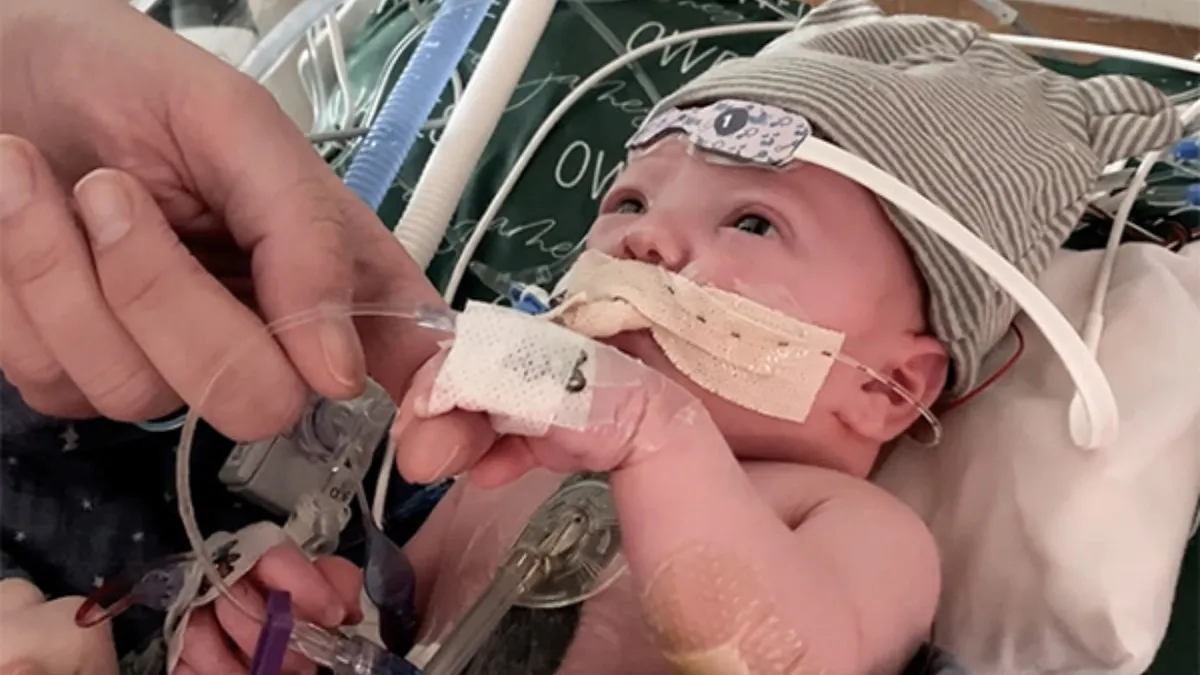
The first-ever partial heart transplant performed in spring 2022 at Duke Health marks a significant advancement in the field of pediatric cardiac surgery.
This pioneering procedure successfully used parts of a donor heart to repair functioning valves and arteries in a 17-day-old infant named Owen Monroe.
Why Partial Heart Transplants Are Needed
Children born with certain severe heart defects often require invasive surgery and valve replacements early in life.
However, the previous standard of care involved using non-living valve implants that do not grow in proportion with the child.
This necessitated multiple open-heart surgeries to replace the valves as the child aged – procedures that have an extremely high 50% mortality rate.
Partial heart transplants that utilize living heart tissue could eliminate the need for repeated high-risk operations.
The Groundbreaking Surgery
Owen was born with a condition called truncus arteriosus that causes only one artery to carry blood from the heart instead of two.
To correct this, the Duke surgical team carefully retrieved the pulmonary artery valves and aorta from a donated infant heart.
They then successfully transplanted these living components into Owen by replacing his own artery and valve.
This two-part transplant has major advantages:
- The valves and artery can grow with Owen like natural heart tissue instead of needing intermittent replacements
- Far less immunosuppressant medication is required compared to a full organ transplant. This will spare Owen from potential long-term medication side effects.
Positive Results After a Year
A recent study published in the Journal of the American Medical Association (JAMA) analyzed Owen’s results over a year post-surgery.
The main findings include:
- The transplanted valves and artery have grown in unison with the toddler just as the Duke surgeons intended and matching native heart tissue
- No further invasive surgery is expected to be required as Owen ages since all components are integrating seamlessly
- Only one-fourth the typical immunosuppressant medication dose was needed, thereby minimizing any damaging effects of long-term use
This confirms the viability, safety and tremendous advantages of partial heart transplants over traditional valve replacement procedures in babies.
Impact & Future Outlook
Since Owen’s landmark surgery, partial heart transplants have been successfully replicated worldwide 13 times, with 9 of those performed at Duke Health including utilizing the innovative “domino transplant” technique.
Domino transplants involve using the still-healthy valves from a full heart transplant recipient to replace the damaged valves of another patient.
This creative method has the immense potential to double the number of lives saved from each donated heart.
Duke Chief of Pediatric Cardiac Surgery Dr. Joseph W. Turek, who led Owen’s transplant, stresses the importance of the next phase:
“Bringing this innovation to a clinical trial would be the next step to achieving the volume in procedures that would change the availability of hearts by a large amount. This innovation adds a lot to the whole donation community because it’s treating more kids, while also honoring the wishes of selfless donor parents who’ve given the ultimate gift.”
In summary, the pediatric cardiac team at Duke Health has pioneered a revolutionary technique that could save the lives of countless children worldwide born with debilitating heart defects.
Their breakthrough partial heart transplant success story paves the path toward a future where perfectly-matched valve and artery transplants can grow in harmony with young recipients – making invasive repeat procedures a thing of the past.